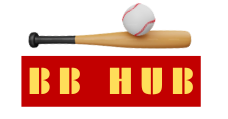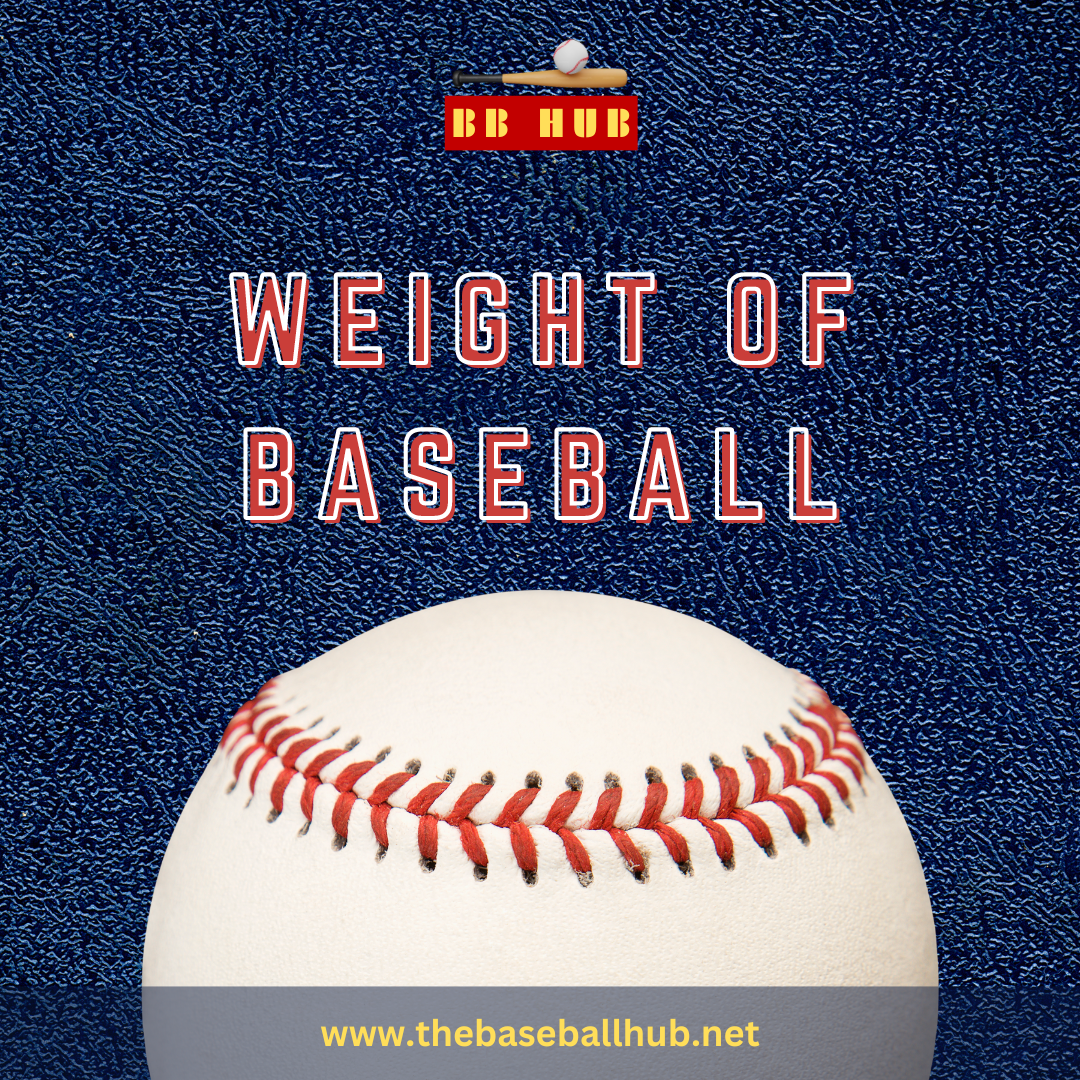Baseball, with its bats and balls, is a game woven with intricate details. Central to this sport’s dynamics is the weight of the baseball, a seemingly simple yet crucial factor that shapes the essence of the game.
How Heavy is the Baseball? A complete guide to know different types and their weights
In this exploration, we’ll get into a detailed journey and see how much does a baseball weigh, its variations, and the historical evolution that has shaped the game we know today.
How Much Does a Baseball Weigh?
Different types of baseballs have different weights, it depends on the material they are made of, lets get into detail and how much these baseballs weigh.
1- Standard Baseball: 5 to 5.25 Ounces
When pros play, they use the standard baseball, and it weighs about the same as five slices of bread or a bit more than a can of soda. It’s the usual in big leagues like MLB.
2- Rubber Baseball for Young Players: Around 4.2 Ounces
Now, for the younger players, they get to use lighter balls made of sponge rubber. It’s like using a soft sponge instead of a regular ball, making it easier for them to learn the game.
3- Low-Compression Baseball for Young Players: Around 4.6 Ounces
There’s another type of ball for young players that’s even softer and lighter. It’s around 4.6 ounces, giving a different feel compared to the usual big-league baseball. It’s like having a squishy and light ball for a more fun and beginner-friendly game.
4- Leather and Synthetic Leather Balls: Around 5 Ounces
Some balls are made with tougher materials like leather or synthetic leather, and these weigh about 5 ounces. They give a different experience in the game, providing a bit more challenge and durability compared to the softer ones.
Understanding these different baseball weights is like getting a sneak peek into the variety that makes the game exciting for players of all levels. From the heavy and standard to the soft and beginner-friendly, each type has its own role in the baseball game.
Users also Read: What hide was used to cover baseballs in 1975
The Story of How Baseballs Have Changed:
Lets get into the history and see the evolution of baseballs, how these balls changed from material to material and improved in their weights, designs and materials.
1- Lemon Peel Ball Era (Early Days):
Back in the early days, pitchers handcrafted baseballs. These had cores made from melted yarn and leather, often from old shoes or fish eyes. Imagine small, dark brown balls with four rows of stitches. They called these the “Lemon Peel Ball” era.
2- Live Ball and Dead Ball Era (1850s):
As time went on, in the 1850s, people realized they needed to make baseballs more consistent. So, they standardized them. Live balls, with more rubber, could be thrown over longer distances. Dead balls, with less rubber, weren’t as good at flying through the air.
3- Figure-8 Baseball Design (Mass Production):
Fast forward to a more recent time when baseballs started being mass-produced. The stitches on these balls were arranged to form the shape of the number 8. This was a big deal and marked a significant change in how baseballs were made.
4- Cork-Core Ball Era (1910):
In 1910, they came up with a new kind of ball, the cork-core ball. These were tougher, allowing players to hit the ball harder. This change led to the end of the “dead ball” period, where hits and scores were low.
5- World War II Cork Ball (1943):
During World War II, there was a shortage of materials like cork and rubber. So, they used balata, a rubber-like material, for baseballs in 1943. After the war, they went back to using rubber cores.
6- Today’s Baseball (Since 1974):
Since 1974, not much has changed in how they design baseballs. However, they switched from using horsehide to cowhide. This change in material has been the most significant shift in recent times.
In looking back at these changes, we see how the simple baseball has undergone a fascinating evolution, from handmade balls to mass production and material shifts, each era leaving its mark on the game we know and love today.
Deconstructing the Anatomy of a Baseball
In understanding the composition of a baseball, we embark on a journey to dissect its intricate anatomy, revealing the various layers that contribute to the dynamics of the game.
1- Core or Baseball Base:
At the heart of every baseball lies its core, a crucial element that tips the scales at approximately 0.5 ounces. This core serves as the foundation for the ball’s weight, influencing its trajectory when thrown, caught, or struck.
2- Black and Red Rubber Layers:
Surrounding the core are layers of black and red rubber, collectively weighing around 0.875 ounces. These layers contribute to the ball’s resilience, providing the necessary bounce and responsiveness during gameplay. The combination of these rubber layers adds a critical dimension to the ball’s overall weight.
3- Outer Layers (Wool Yarn, Cowhide or Horsehide, Rubber Coating, 216 Red Stitches):
The outer layers encapsulate the distinct features that define a baseball. Comprising wool yarn, cowhide or horsehide, a rubber coating, and precisely 216 red stitches, these components collectively contribute approximately 3.62 ounces to the ball’s weight. The wool yarn adds a layer of softness, the hide enhances durability, the rubber coating influences grip, and the stitches play a pivotal role in the ball’s aerodynamics.
4- Official Baseball Diameter: 9 to 9.25 Inches
Beyond its weight, the official diameter of a baseball ranges from 9 to 9.25 inches. This standardized size ensures consistency in gameplay, allowing pitchers, batters, and fielders to anticipate the ball’s movement accurately.
The deconstruction of a baseball’s anatomy unveils a meticulous balance of materials and design. From the core that forms its nucleus to the outer layers that define its appearance and performance, every element plays a vital role in shaping the experience of America’s beloved pastime.
Going through anatomy of these baseballs, we can easily get an idea of how much does a baseball weigh, analyzing the weight of each part of ball.
Users also Read: Cycle in Baseball
Conclusion: The Tale of Baseball Weights
So, that’s the scoop on baseballs and their weights. From the standard 5 to 5.25 ounces used by the big shots in the game to the softer rubber balls for kids, each kind brings something special to the baseball story.
For the young ones, there’s the low-compression ball, lighter and squishier for some extra fun. And if you’re up for a challenge, there are the leather and synthetic leather balls, a bit tougher and weighing around 5 ounces.
Looking back, we explored the early days of handmade Lemon Peel Balls, the Live and Dead Ball eras, the Figure-8 Design, and even the switch from horsehide to cowhide in 1974. Every era added a new twist to the game we all love.
So, whether you’re swinging in the big leagues or just starting out, the weight of a baseball is like a little piece of history in your hands. It’s part of what makes baseball a game for everyone, from the pros to the newbies, bringing joy with every pitch and swing, knowing how much does a baseball weigh, is important for everyone even if its the beginner or a pro baseball player.

